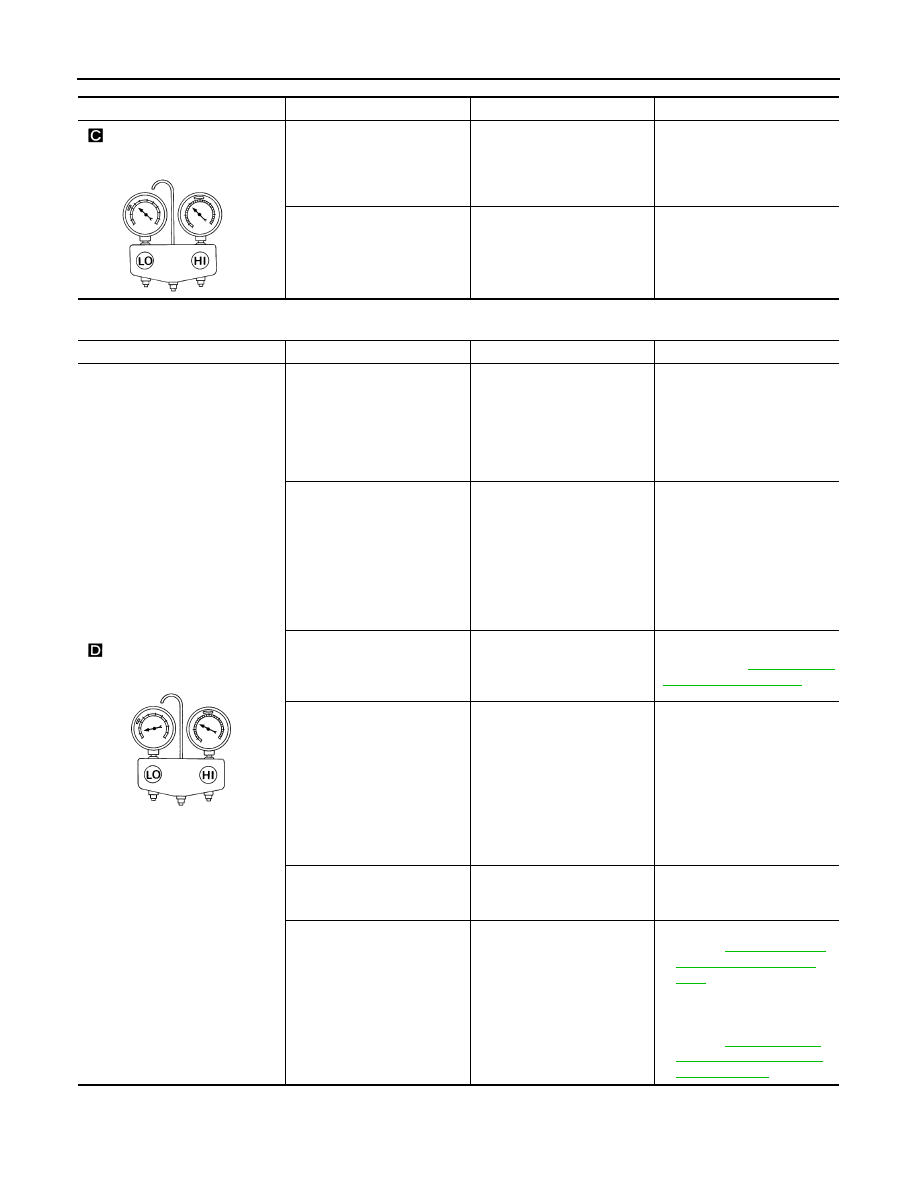Nissan Pathfinder (2012 year). Instruction - part 433

HAC-186
< SYMPTOM DIAGNOSIS >
[MANUAL AIR CONDITIONER]
INSUFFICIENT COOLING
Both High- and Low-pressure Sides are Too Low
Low-pressure Side Sometimes Becomes Negative
Gauge indication
Refrigerant cycle
Probable cause
Corrective action
High-pressure side is too low and
low-pressure side is too high.
High- and low-pressure sides
become equal soon after com-
pressor operation stops.
Compressor pressure opera-
tion is improper.
↓
Damaged inside compressor
packings.
Replace compressor.
No temperature difference be-
tween high- and low-pressure
sides.
Compressor pressure opera-
tion is improper.
↓
Damaged inside compressor
packings.
Replace compressor.
AC356A
Gauge indication
Refrigerant cycle
Probable cause
Corrective action
Both high- and low-pressure sides
are too low.
• There is a big temperature
difference between liquid
tank outlet and inlet. Outlet
temperature is extremely
low.
• Liquid tank inlet and expan-
sion valve are frosted.
Liquid tank inside is slightly
clogged.
• Replace liquid tank.
• Check oil for contamination.
• Temperature of expansion
valve inlet is extremely low
as compared with areas
near liquid tank.
• Expansion valve inlet may
be frosted.
• Temperature difference oc-
curs somewhere in high-
pressure side.
High-pressure pipe located be-
tween liquid tank and expan-
sion valve is clogged.
• Check and repair malfunc-
tioning parts.
• Check oil for contamination.
Expansion valve and liquid
tank are warm or only cool
when touched.
Low refrigerant charge.
↓
Leaking fittings or compo-
nents.
Check refrigerant system for
leaks. Refer to
.
There is a big temperature dif-
ference between expansion
valve inlet and outlet while the
valve itself is frosted.
Expansion valve closes a little
compared with the specifica-
tion.
↓
1.
Improper expansion
valve adjustment.
2.
Malfunctioning expansion
valve.
3.
Outlet and inlet may be
clogged.
• Remove foreign particles by
using compressed air.
• Check oil for contamination.
An area of the low-pressure
pipe is colder than areas near
the evaporator outlet.
Low-pressure pipe is clogged
or crushed.
• Check and repair malfunc-
tioning parts.
• Check oil for contamination.
Air flow volume is too low.
Evaporator is frozen.
• Check intake sensor circuit.
Refer to
• Replace compressor.
• Repair evaporator fins.
• Replace evaporator.
• Refer to
Blower Motor Component
Function Check"
AC353A
August 2012
2012 Pathfinder